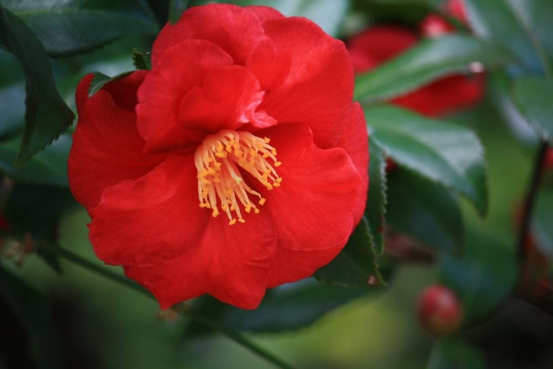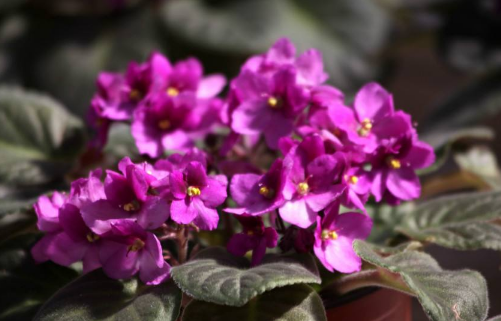Maintenance methods of five-colored plum
Five-colored plum is a kind of light-loving plant, so the place to choose to plant should be sunny, preferably outdoors or on the balcony, usually keep the soil moist and not too dry, and at the same time spray water to the leaves to increase the temperature. at the same time, do not mistakenly eat five-colored plum leaves, these are poisonous, if you eat diarrhea, fever poisoning, can be planted in a basin, flowering is particularly beautiful.

Culture methods of Prunus mume
Five-colored plum is native to tropical America, and a small amount of wild plum is found in the south of China. Like warm, humid and sunny environment, not cold-resistant. Bonsai can be maintained outside in the sun during the growing season from spring to autumn, even in midsummer, but it requires good ventilation.
If the light is insufficient, the plants will grow too long, the stems and branches will be thin and long, and the flowering will be rare, which will seriously affect the ornamental plants. Keep the basin soil moist during the growing period to avoid excessive dryness, and pay attention to spraying water to the leaves to increase air humidity; apply thin fertilizer dominated by phosphorus and potassium every 15 days or so to provide sufficient nutrients and make the plant blossom more.
1. Pruning
Five-color plum grows fast, so the branches and leaves that affect the shape should be cut off in time in order to maintain the beauty of the tree shape, cut the overlong twigs after each flower, and cut the plants again before entering the house at the end of autumn and the beginning of winter. If the room temperature above 15 ℃ is maintained in the sunny part of the room in winter, the plant can grow and blossom normally, and it should be watered, fertilized and pruned properly. If you can not maintain such a high temperature, control watering, stop fertilization, so that the plant dormancy, more than 8 ℃ can safely survive the winter. Turn the pot once every spring, and trim the plant again, cutting off dead branches, weak branches and other branches that affect the shape of the tree.
II. Reproduction
Five-color plum can use sowing, cutting, striping and other methods to propagate flower seedlings. After the fruit is ripe, it is picked and retted, soaked in water and scrubbed to remove the pulp, and the seeds are obtained. To avoid losing water, seeds can be sowed with picking in autumn, or stored in mixed sand, and sown again in spring. The temperature should be kept above 20C in the germination stage after sowing. The germination rate is about 60%. The southern sowing seedlings can blossom in autumn and cut more than May. One-year-old branches are taken as cuttings, every two sections are divided into one section, the upper leaves are retained and half of them are cut off, and the lower part is inserted into the soil, maintained in a sparse shade and often sprayed with water. It takes about 1 month to take root and produce new branches. The plant has a lot of branches and takes root in the soil, so the flexible branches are scratched and pressed into the soil, and the roots are cut off after the root system grows.
Third, fertilizer and water
Pot soil to loose and fertile sandy loam is suitable, the requirements are not strict, the growth period every 10 days to apply mature liquid fertilizer, combined with watering, spraying 3% urea twice every 10 days, can make the leaves thicker and greener. When planting, organic fertilizer is applied as base fertilizer, and initial watering is used to promote growth. when it survives and grows vigorously, irrigation can be reduced, and vine branches can be buried in the soil in open field cultivation, which can be gradually expanded into a large clump.
How to cultivate Prunus mume with five colors
Five-colored plum is a kind of garden flower plant, many people think that five-colored plum is very good, now let's understand how to raise five-colored plum, the breeding method of five-colored plum.
How to cultivate Prunus mume with five colors
The origin of the name of five-colored plum
Five-colored plum is also called Qiqihua, Dragon Boat Flower, Ma Yingdan, stinky grass and other aliases. There are many colors of five-colored plum, such as red, pink, yellow, orange and white. Some flowers are yellow or pink, but slowly become orange or orange, so they are called discolored flowers or five-colored plum and seven-colored flowers. Many people want to raise five-colored plum, but it is a sunny plant that can be raised on the balcony or in the garden.
Culture methods of Prunus mume
1. The soil requirements of five-colored plum.
The requirement of five-color plum on soil quality is not strict, it is best to use fertile and loose sandy soil for the growth of five-color plum.
2. Maintenance of five-colored plum
Five-colored plum is a kind of light-loving plant, so the place to choose to plant should be sunny, preferably outdoors or on the balcony, usually keep the soil moist and not too dry, and at the same time spray water to the leaves to increase the temperature. at the same time, do not mistakenly eat five-colored plum leaves, these are poisonous, if you eat diarrhea, fever poisoning, can be planted in a basin, flowering is particularly beautiful.
- Prev

Key points of bonsai conservation:
1. If the light wants to enjoy the beauty of tea plum bonsai all the year round, the usual maintenance is very important. Camellia oleifera is a plant that needs to live in a semi-shady environment and is ventilated. If there is a lack of light and ventilation, the leaves will have no luster, the flowers will not be bright enough, and they may not even bloom much.
- Next

Sowing and Propagation of Corydalis
The sowing time can be spring or autumn, and the greenhouse cultivation will have a higher germination rate from September to October. Soil Corydalis seeds are very small, sowing basin soil should also be fine, after sowing do not need to cover the soil, flattening on the line. The optimum temperature for the growth of Corydalis is about 1826 ℃.
Related
- Fuxing push coffee new agricultural production and marketing class: lack of small-scale processing plants
- Jujube rice field leisure farm deep ploughing Yilan for five years to create a space for organic food and play
- Nongyu Farm-A trial of organic papaya for brave women with advanced technology
- Four points for attention in the prevention and control of diseases and insect pests of edible fungi
- How to add nutrient solution to Edible Fungi
- Is there any good way to control edible fungus mites?
- Open Inoculation Technology of Edible Fungi
- Is there any clever way to use fertilizer for edible fungus in winter?
- What agents are used to kill the pathogens of edible fungi in the mushroom shed?
- Rapid drying of Edible Fungi

